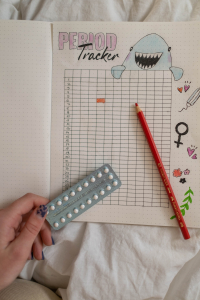What is the menstrual cycle?
The menstrual cycle is a monthly activity that prepares a woman’s body for reproduction. The menstrual cycle consists of menstruation followed by ovulation, and eventually, the uterus gets ready for pregnancy. When ovulation occurs, and the egg isn’t fertile, the uterus lining sheds through the vagina, called the menstrual period.
What is the typical cycle and length of the periods?
Every woman is different from the other; likewise, the cycle and the length of periods vary too. What can be normal to one woman need not be customary to another. The period length and period cycle change significantly from menarche to postnatal to perimenopause (before menopause).
The days between the first day of the menstruation of one month to the first day of the menstruation of the following month is called the menstruation cycle. The period cycle can fall between 21 to 35 days (in some instances till 45 days) is considered normal. The length of the period can be anywhere between 2 to 7 days. Long cycles are typical during the initial years after menstruation and menopause. The period cycle regularises as we age, and the length of periods every month gets consistent.
The length, cycle, and heaviness of periods vary when using contraception like IUDs/ birth control pills/ morning-after pills.
The period cycle and length during adolescence :
It is common for the period to be irregular during menarche (first menstrual period). Every cycle will differ, and so the length of the period. The period lengths and period cycle will become more regular as it progresses through menarche to adolescence. Yet, it may not be consistent. The average period length can be anywhere between 2 to 7 days; it can extend even longer for some.
The period cycle and length during perimenopause:
It is prevalent for the period to be irregular during perimenopause (phase leading to menopause). The cycle, length of periods differ and are not consistent. The missing periods are pretty standard during this phase. This stage begins somewhere in the mid-forties and extends till the early fifties. Again this varies from person to person. The bleeding pattern, too, can range from being sporadic to very heavy.
Common factors that affect the menstrual cycle and the length of periods:
The disruption of the period cycle or flow can also be the result of hormonal changes due to
- Contraceptives: Birth control pills or IUDs can make your periods shorter or longer.
- Pregnancy: Periods stops during pregnancy and missing period is the most common indicator or the first signs of pregnancy.
- Polycystic ovary syndrome (PCOS): The hormonal imbalance prevents an egg from generally developing ovaries. This condition is the result of irregular menstrual cycles or missed periods.
- Eating disorders: Anorexia and other eating disorders can also disrupt the menstrual cycle and make the periods stop.
- Stress, smoking, drinking alcohol, being obese, thyroid, or chronic diseases can affect the period cycle.
When to see your doctor?
When you have the following symptoms, contact your gynaecologist for treatment.
- Heavy bleeding
- Prolonged bleeding
- Fever, nausea, and vomiting during periods
- Severe cramps or pain.
- Periods extending beyond your standard period length
- Bleeding after menopause for more than a year.
Benefits of keeping track of periods:
It is essential to get familiar with your period cycle. When a period begins, how long it lasts, the duration between one period and another.
The most common benefits of keeping track of periods are:
- It will help you to understand your period patterns. The average flow days, the duration between one cycle to another. If you know your menstruation cycle, you will be more in control and expect the unexpected.
- You will know your ovulation period. While the exact day of ovulation is hard to predict, you can still expect the days leading to ovulation and those following ovulation easily by tracking your periods. It becomes easier to plan pregnancy accordingly.
- The menstrual cycle is also an indicator of general health conditions and wellness. An unpredictable period can be due to an existing medical condition. The fitness of your uterus, ovaries and capturing chronic illnesses get much simpler when you track your periods.
- It can tell a lot about your sex drive. By keeping tabs on the periods, you will notice the highs and lows of your sex drive and sexual desires.
- Knowing the rhythm of your menstrual cycle can help tackle PMS and keep in check and manage your emotions like anger, irritability, fatigue, and continue being more productive.
Laiqa period tracker can help you to track your periods. Keep an eye on your fertile and ovulation period. Take control of your period patterns.
Source link:
https://www.nhs.uk/conditions/periods/fertility-in-the-menstrual-cycle/#:~:text=The%20length%20of%20the%20menstrual,to%2040%20days%2C%20are%20normal.https://www.webmd.com/women/normal-period




